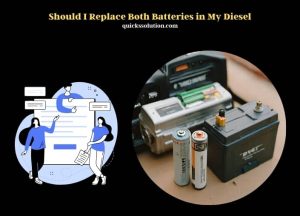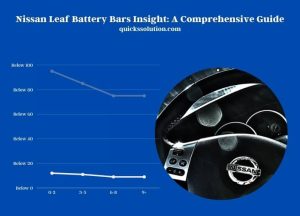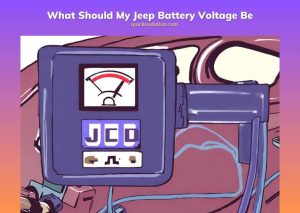Published on: July 22, 2023
Written by John Stevens / Fact-checked by Hashim Manna
You can drive with your hubs locked at the same speed as when they are unlocked. But be mindful of the terrain and weather conditions, as these can affect your vehicle’s handling.
Driving with your hubs locked in 2WD isn’t inherently detrimental, but it can lead to increased fuel consumption and potentially premature wear on your vehicle’s drivetrain components. This is especially true for vehicles that aren’t designed for constant 4WD use. If you own an F250, you might wonder if you can leave your hubs locked. The simple answer is yes, but similar caveats apply. More fuel usage and increased wear on your drivetrain may occur over time.

If you’re considering driving without locking hubs, remember that this can potentially lead to a lack of traction in certain situations, like off-road conditions or inclement weather. However, when you’re driving in 4WD with hubs unlocked, you won’t get the traction benefits associated with a locked hub, leaving your vehicle in essentially 2WD mode.
For those operating a vehicle such as an F350, it’s common to wonder about driving with hubs locked. You can drive your F350 with the hubs locked, but it’s recommended to unlock them when 4WD isn’t necessary, to prevent potential drivetrain damage and reduce fuel consumption.
Driving with wheel locks on is not a problem, as they are designed to prevent theft, not affect driving. As for manual locking hubs vs automatic, both have their merits. Manual locking hubs require driver interaction but can provide a reliable lock when needed. Automatic locking hubs offer convenience as they engage and disengage automatically when you shift in and out of 4WD, but they can also be more prone to failure due to their complexity.
The Core Mechanics of Locked Hubs
The Function and Purpose of Locking Hubs
Locking hubs, found on four-wheel-drive vehicles, are pivotal for transitioning between two and four-wheel drive. Engaging the locking hubs allows the front wheels to drive the vehicle, while disengaging them disconnects the wheels from the drivetrain, improving fuel efficiency and reducing wear on the front axle.
Manual Versus Automatic Locking Hubs
There are two types of locking hubs: manual and automatic. Manual hubs require the driver to exit the vehicle and turn a dial on the hub to engage or disengage them. On the contrary, automatic hubs engage themselves when the vehicle switches into four-wheel drive and disengage when it switches back to two-wheel drive.
Comparison of Manual and Automatic Locking Hubs
| Manual Locking Hubs | Automatic Locking Hubs | |
| Activation | Manually by the driver | Automatically by the vehicle |
| Durability | High due to simple design | Less due to complex mechanism |
| Cost | Generally cheaper | More expensive |
| Driver involvement | High | Low |
Speed Limitations with Locked Hubs
Interplay of Speed and Locked Hubs
The speed at which you can drive with your hubs locked varies and is dependent on multiple factors, including vehicle type, terrain, and specific manufacturer’s guidelines. Exceeding recommended speeds may result in damage to the hubs or other parts of the vehicle’s drivetrain.
Speed Impact on the Lifespan of Locked Hubs
Driving at excessive speeds with the hubs locked can wear them out more quickly, potentially leading to costly repairs. It can also result in poor fuel economy and reduced vehicle performance.

Effects of Different Speeds on Locked Hubs
| Speed | Effects on Locked Hubs |
| Low Speed | Reduced wear and tear, optimal performance |
| High Speed | Increased wear and tear, potential damage, reduced fuel economy |
Impact of Terrain on Driving with Locked Hubs
Navigating Highways with Locked Hubs
Driving on highways with hubs locked can be done, but it’s typically not recommended. High-speed highway driving can cause excessive wear and tear on the hubs and drivetrain components.
Off-Road Challenges with Locked Hubs
Off-road conditions are where locking hubs truly shine. They enable better traction and control, especially in muddy or rocky terrains. While it’s safe to drive at lower speeds, caution should still be taken to prevent potential damage.
Terrain-Specific Speed Recommendations for Locked Hubs
| Terrain | Speed Recommendations |
| Highway | Low to moderate speed |
| Off-Road | Low speed |
Potential Risks of High Speeds with Locked Hubs
Risks to the Mechanical Integrity of the Vehicle
Driving at high speeds with your hubs locked can put undue stress on the drivetrain, potentially leading to mechanical failure. It’s critical to follow manufacturer’s guidelines and use common sense to prevent this.
Safety Risks for Passengers
High speeds with locked hubs could also pose safety risks, including loss of vehicle control or higher potential for rollovers, especially during off-road driving or in adverse weather conditions.
Overview of Risks Associated with High Speeds and Locked Hubs
| Risk Type | Risks Associated with High Speeds and Locked Hubs |
| Mechanical | Potential damage to drivetrain and hubs |
| Safety | Possible loss of vehicle control, higher rollover potential |
Best Practices for Driving with Locked Hubs
Recommendations for Safe Speeds
Always adhere to the vehicle manufacturer’s recommendations for maximum speed with locked hubs. Generally, keeping your speed lower, particularly in off-road conditions, will help to minimize potential damage and risk.
Knowing the Right Time to Lock and Unlock Hubs
It’s crucial to lock and unlock your hubs as per the driving conditions. Generally, hubs should be locked for off-road driving or challenging weather conditions and unlocked for regular driving or highway use.
Key Takeaways for Safe Driving with Locked Hubs
| Best Practice | Why it Matters |
| Adhering to Manufacturer’s Guidelines | Ensures optimal performance and longevity of hubs |
| Knowing When to Lock/Unlock Hubs | Prevents unnecessary wear and tear and ensures safe driving |
Maintaining Your Locking Hubs
Regular Maintenance Practices
Routine checks and maintenance of your locking hubs can help detect issues early, prolong their lifespan, and ensure they function as intended.
Recognizing the Need for Hub Servicing
Signs that your hubs may need servicing include difficulty engaging or disengaging them, unusual noises, or poor vehicle performance while driving with the hubs locked.

Maintenance Schedule for Locking Hubs
| Maintenance Task | Recommended Frequency |
| Visual Inspection | Every oil change |
| Full Service and Cleaning | Every 30,000 miles |
FAQs
Is It Bad to Drive with Your Hubs Locked?
No, it’s not inherently bad to drive with your hubs locked. However, if you’re driving on normal roads or at high speeds, it’s advisable to keep your hubs unlocked. This helps reduce unnecessary wear and tear and enhances fuel efficiency.
Is Locking Hubs Necessary for Driving at High Speeds?
When it comes to driving at high speeds, having a lock hub installation process in place is essential. Locking hubs allow drivers to engage or disengage their front wheels, providing better control and reduced wear on the front drivetrain. This feature is particularly advantageous off-road or in low-traction situations, making it necessary for a smooth and safe high-speed driving experience.
How to Tell If Hubs Are Locked on an F250?
You can usually tell if the hubs are locked on an F250 by checking the hub itself. Manual hubs should have visible indicators on the hub dial, usually labeled “lock” and “free”. If it’s set to “lock”, your hubs are engaged.
Can You Leave Hubs Locked on an F250?
Yes, you can leave the hubs locked on an F250, but it’s not recommended for regular driving. Continuous driving with the hubs locked can cause increased wear on the drivetrain and reduce fuel economy. It’s best to unlock the hubs for standard driving conditions.
Do You Have to Lock Hubs for 4×4?
Locking hubs is necessary for most older 4×4 vehicles to engage the four-wheel drive. In these vehicles, if the hubs aren’t locked, the four-wheel drive won’t function properly. But many modern 4×4 vehicles come with automatic locking hubs or don’t use locking hubs at all.
Does 4WD Work Without Locking the Hubs?
On most traditional 4WD vehicles, the 4WD system won’t engage properly without locking the hubs. However, many newer models feature automatic hubs or other systems that don’t require manual locking, allowing the 4WD to work without any additional steps.
Read more:




